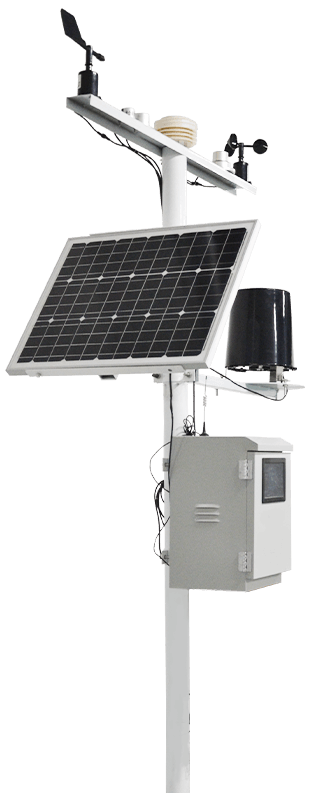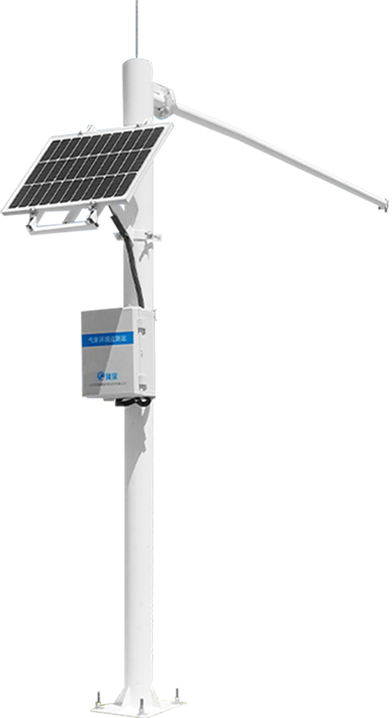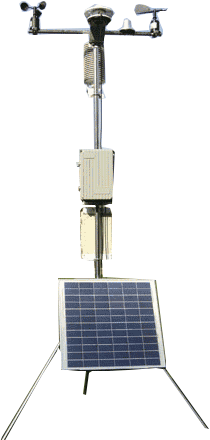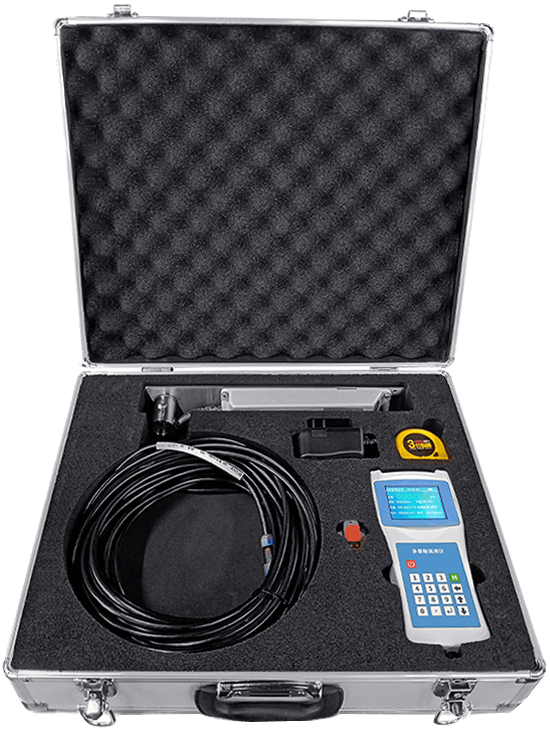
Small Automatic Weather Station
- Product Number:LD-QC6
- Product Difference:Monitor conventional meteorological elements such as air temperature, air humidity, wind direction, wind speed, atmospheric pressure, and rainfall
Product Introduction
The compact automatic weather station is a multi-parameter automated observation system developed and manufactured in accordance with the meteorological observation standards of the World Meteorological Organization (WMO). It monitors conventional meteorological parameters including air temperature, air humidity, wind direction, wind speed, atmospheric pressure, and precipitation. The station operates fully automatically around the clock in unattended harsh environments. They can form mesoscale meteorological monitoring networks, with each station functioning as a sub-station transmitting data to a central hub. Parameters can be configured and data retrieved via a flexible mobile app or through dedicated meteorological parameter display terminals. Features include automatic logging, threshold alerts, and data communication capabilities.
Compact automatic weather stations find extensive application in meteorology, hydrology, agriculture, industry, environmental protection, tourism, scientific research, urban environmental monitoring, and other fields. Key applications include mesoscale dense networks, grid-based forecasting services, high-resolution weather forecast data sources, critical monitoring for flash flood warnings, regional meteorological environment observation, industry-specific service systems, campus weather systems, environmental protection meteorological monitoring, and general aviation airports.
Product Features
Data Logger: Utilizes an ARM7-based industrial-grade processor chip with a 192×64 full dot matrix LCD display (optional 7-inch LCD screen available). Designed for harsh environments, it features a rugged yet aesthetically pleasing exterior, delivering high reliability, precision, ease of maintenance, and backup capability.
Sensors: Environmental temperature, humidity, wind speed, wind direction, barometric pressure, soil temperature, soil moisture, rainfall, total solar radiation, CO₂, sunshine duration, light intensity, evaporation, dew point temperature, UV radiation, photosynthetic radiation, precipitation (rain/snow), and other meteorological sensors (optional based on requirements). Observation data exhibits high precision and stability.
Continuity: Operates normally during 15 consecutive days of rain or overcast conditions (4G communication).
Data Storage: 16M (bit) memory stores 12 months of minute-by-minute and hourly data.
Supports external USB storage expansion.
Integrated meteorological data monitoring platform.
Mounting structure: Features an aluminum-titanium alloy mast as the main support, with the mast surface treated via hot-dip galvanization and electrostatic powder coating for superior corrosion resistance. The 3.5-meter mast height includes wind-resistant guy wires and maintains an aesthetically pleasing design.
Data Statistics Function: Supports single-parameter statistics, enabling calculation of maximum, minimum, and average values by year, month, day, hour, 10-minute intervals, or custom time periods.
Data Query Function: Enables real-time and historical data queries, export, and printing for any specified timeframe.
Data Charting Function: Generates real-time curves based on collected data, presenting results visually through bar charts, pie charts, and other intuitive formats.
Waterproof Rating: IP65.
Product parameters
Name | Measurement Range | Resolution | Accuracy |
Ambient temperature | -50~+100℃ | 0.1℃ | ≤±0.2℃ |
Relative humidity | 0~100%RH | 0.1% | ±1.2%RH |
Wind Direction | 0–360° (16 directions) | 1° | ±3° |
Wind speed | 0~75m/s | 0.1m/s | ±(0.3+0.03V)m/s |
Rainfall | ≦4mm/min | 0.2mm | ±0.4mm |
Atmospheric pressure | 10~1200hPa | 0.1hPa | ±0.3hPa |
Configuration can be expanded based on user requirements: light intensity sensors, total radiation sensors, evaporation sensors, dew point temperature sensors, ultraviolet radiation sensors, photosynthetic radiation sensors, sunshine duration sensors, carbon dioxide sensors, rain/snow sensors, soil moisture sensors, soil temperature sensors, and various other meteorological element sensors. | |||
Data Acquisition Unit | Data acquisition, storage, communication, analysis, and other functions | ||
Power Supply System | Optional power supply systems: mains electricity/solar power/battery/multi-source power supply | ||
Communication System | RS232/RS485, USB, wireless GPRS, Ethernet, and other communication methods | ||
Dedicated Mounting Bracket | Houses the protective enclosure, sensors, power supply, communication equipment, etc. | ||
Lightning Protection System (Optional) | Lightning rods and associated accessories | ||

 +86 19353291814
+86 19353291814
 +86 19353291814
+86 19353291814



